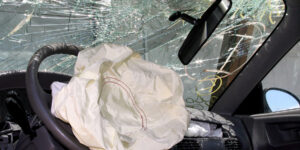Despite education programs and state laws, phone-based driving distraction is still on the rise—and is likely responsible for far more accidents than widely reported, says a new study from Cambridge Mobile Telematics (CMT).
CMT’s analysis of 54 million trips recorded in 2019 indicated that 37 percent of car trips involved at least 20 seconds of cumulative phone distraction. During daytime hours, that number rose to 41 percent. Worse, based on insurance claims data, at least 19 percent of car crashes in 2019 were attributable to phone-based distractions. CMT said these numbers are far greater than those offered by state and national traffic safety organizations.
The study noted that crash reports are often inadequate and incomplete due to their inability to accurately record distraction, while states use different definitions to report on crash causation and many do not include distraction as a possible cause.
While state laws and even headlines about the dangers of driving while texting or talking don’t seem to be having an impact on drivers, CMT believes telematics may be the answer. Drivers are more inclined to change for financial gain, such as earning discounts (39 percent) or rewards (29 percent), or when they are able to track their improvement and compare their scores to others. However, to keep the momentum, drivers need to be able to see their progress on a regular basis, not wait six months to see the results or receive the benefits. They need a constant feedback loop, CMT said.
Among the study’s other findings:
- Based on multiple surveys about driving behavior, CMT found that phone use—including calls, texts, videos, navigation and social media—is responsible for the vast majority (68 percent) of driver distractions.
- CMT noted that a “distraction hangover” continues for at least 10 seconds after the phone distraction has ended, leaving drivers at a 70 percent higher risk for an extreme braking event during that period.
- CMT expects that by 2025, 4,000 people per year will lose their lives from smartphone distraction-related crashes. By that time, 500,000 crashes will be associated directly with smartphone distraction.
Source: CMT study, “The Harsh Realities of Phone Distraction”





















 Defense Lawyer’s Perspective: Connecting Insurers, Promoting Plaintiff-Style Solidarity
Defense Lawyer’s Perspective: Connecting Insurers, Promoting Plaintiff-Style Solidarity  Soft Market Ahead? The Role of Digital Transformation for E&S Insurers
Soft Market Ahead? The Role of Digital Transformation for E&S Insurers  5 Questions to Ask to Identify Your Company-Specific Top Risks
5 Questions to Ask to Identify Your Company-Specific Top Risks  Embroker CEO Reflects on Tech, Insurance Journey
Embroker CEO Reflects on Tech, Insurance Journey 
